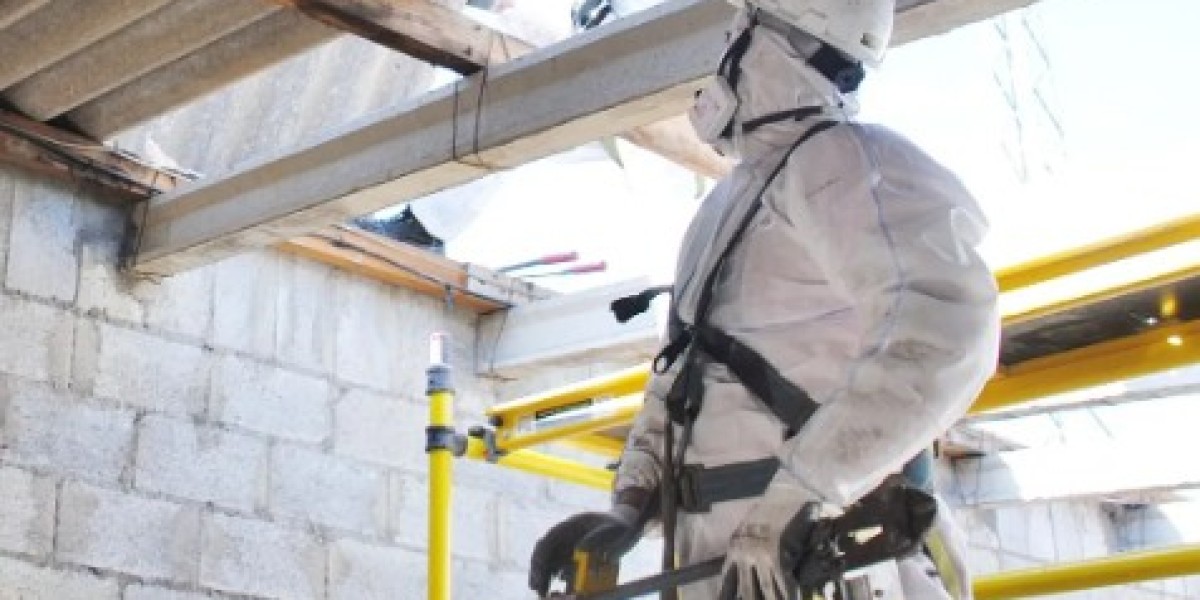Asbestos Services occurring mineral that was widely used in construction and various industries due to its heat resistance and durability. However, it has been linked to serious health issues, including lung cancer and asbestosis, making its safe management and removal crucial. This guide provides an in-depth look at asbestos services, including identification, assessment, removal, and disposal, to help ensure safety and compliance with regulations.
Understanding Asbestos
What is Asbestos?
Asbestos is a group of six naturally occurring silicate minerals known for their fibrous properties. These minerals are divided into two main categories:
- Serpentine Asbestos: The most common type is chrysotile, also known as white asbestos.
- Amphibole Asbestos: Includes types like amosite (brown asbestos) and crocidolite (blue asbestos), as well as others.
Asbestos fibers are microscopic and can become airborne, posing significant health risks when inhaled.
Health Risks of Asbestos Exposure
Exposure to asbestos can lead to severe health conditions, including:
- Asbestosis: A chronic lung disease caused by inhaling asbestos fibers, leading to scarring of lung tissue.
- Lung Cancer: Long-term exposure to asbestos increases the risk of developing lung cancer.
- Mesothelioma: A rare and aggressive cancer that affects the lining of the lungs, abdomen, or heart, primarily caused by asbestos exposure.
- Pleural Thickening: Abnormal thickening of the lining around the lungs, which can affect breathing.
Identifying Asbestos
Common Locations of Asbestos
Asbestos can be found in various building materials and locations, including:
- Insulation: Pipe insulation, boiler insulation, and spray-on fireproofing.
- Flooring: Vinyl floor tiles and the backing of some linoleum.
- Roofing: Asbestos cement roofing sheets and shingles.
- Walls: Asbestos-containing cement boards or panels used for walls and ceilings.
- Fireproofing Materials: Fire-resistant coatings and materials used in buildings.
How to Identify Asbestos
Identifying asbestos requires professional assessment, as it is not possible to determine its presence visually alone. Methods include:
- Building Surveys: A thorough inspection of building materials and structures.
- Laboratory Testing: Samples of suspected materials are analyzed in a laboratory to confirm the presence of asbestos fibers.
Asbestos Assessment
Importance of Asbestos Assessment
Asbestos assessment is essential to determine the presence, condition, and risk associated with asbestos-containing materials (ACMs). This helps in planning appropriate management or removal actions.
Types of Asbestos Assessments
- Management Survey: Aimed at identifying the presence of asbestos in buildings and assessing its condition to manage risks.
- Refurbishment and Demolition Survey: Conducted before major refurbishment or demolition to identify all asbestos-containing materials that might be disturbed.
Conducting an Asbestos Assessment
The assessment process typically involves:
- Visual Inspection: Identifying and documenting suspected asbestos-containing materials.
- Sampling: Collecting samples from suspect materials for laboratory analysis.
- Risk Assessment: Evaluating the condition and potential risk of asbestos exposure based on the findings.
Asbestos Removal
When is Asbestos Removal Necessary?
Asbestos removal is required when:
- Asbestos is Damaged: ACMs are in poor condition or deteriorating.
- Renovation or Demolition: Work that will disturb ACMs.
- Regulatory Compliance: When required by health and safety regulations.
Asbestos Removal Process
- Planning: Developing a removal plan, including safety measures and disposal procedures.
- Preparation: Isolating the work area, setting up containment measures, and ensuring proper personal protective equipment (PPE) is used.
- Removal: Carefully removing asbestos-containing materials while minimizing fiber release.
- Disposal: Ensuring asbestos waste is disposed of properly in accordance with regulations.
Safety Precautions
- Personal Protective Equipment: Use of appropriate PPE, including respirators, gloves, and protective clothing.
- Containment: Sealing off the work area to prevent asbestos fibers from spreading.
- Air Monitoring: Conducting air quality tests to ensure that asbestos fibers are not present in the environment after removal.
Asbestos Disposal
Regulations for Asbestos Disposal
Disposal of asbestos waste is strictly regulated to prevent environmental contamination. Regulations typically include:
- Packaging: Asbestos waste must be securely packaged and labeled.
- Transportation: Using licensed waste carriers for transportation.
- Disposal Sites: Disposal at licensed and authorized facilities designed to handle asbestos waste.
Disposal Methods
- Landfill: Asbestos waste is disposed of in specially designated landfills.
- Encapsulation: In some cases, asbestos waste can be encapsulated and managed on-site.
Asbestos Management
Developing an Asbestos Management Plan
An asbestos management plan is essential for ongoing management and safety. It should include:
- Inventory: A record of identified asbestos-containing materials.
- Condition Monitoring: Regular inspections to assess the condition of ACMs.
- Action Plan: Procedures for dealing with asbestos damage, maintenance, and emergency situations.
- Training: Ensuring that personnel are trained in asbestos awareness and safety procedures.
Regulatory Compliance
Compliance with local and national regulations is crucial for asbestos management. This includes adhering to safety standards, reporting requirements, and maintaining proper documentation.
Finding Professional Asbestos Services
Choosing a Qualified Asbestos Contractor
When selecting an asbestos contractor, consider:
- Certification: Ensure the contractor is certified and licensed for asbestos handling and removal.
- Experience: Look for contractors with a proven track record in asbestos management.
- Insurance: Verify that the contractor has appropriate insurance coverage for asbestos work.
- References: Check reviews and references from previous clients to assess reliability and quality.
Questions to Ask
- What certifications and licenses do you hold?
- Can you provide references or case studies of previous work?
- What safety measures and procedures do you follow?
- What is the estimated cost and timeline for the project?
Conclusion
Asbestos management is a critical aspect of maintaining a safe environment, especially in older buildings where asbestos-containing materials may be present. Understanding the processes of identification, assessment, removal, and disposal is essential for effective management and regulatory compliance. By following best practices and working with qualified professionals, you can ensure that asbestos is handled safely and responsibly, protecting both health and the environment.








